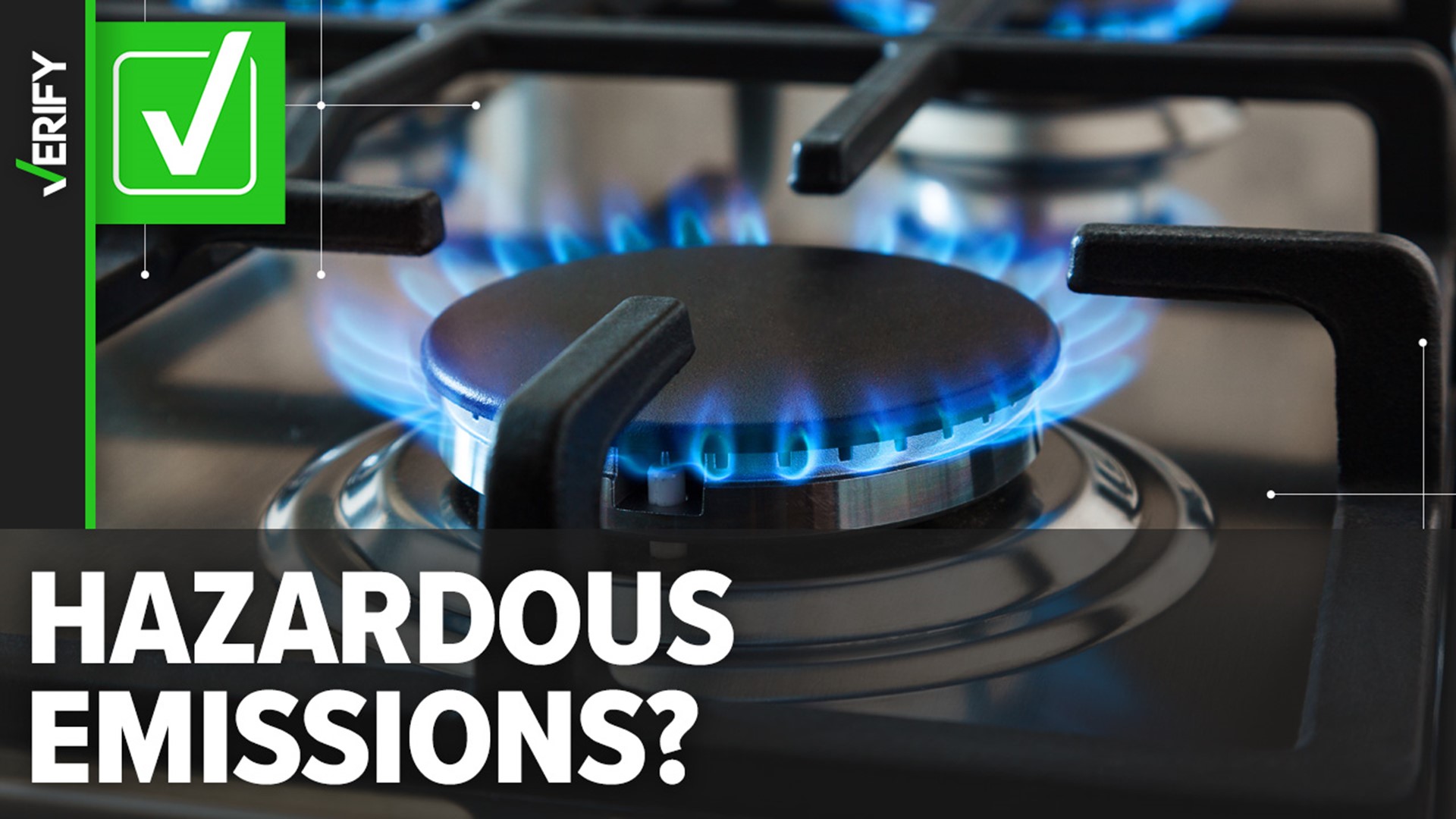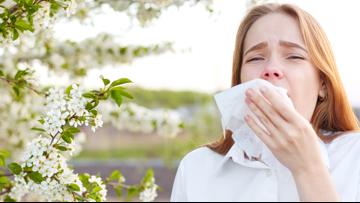About one in three households in America has a gas stove, but some cities and states are making moves to ban them in new buildings.
That’s because studies have shown a reduction of gas stoves will reduce greenhouse gas emissions. But some people say gas stoves are also detrimental to human health.
VERIFY viewer Teresa emailed us to ask whether using gas stoves can be harmful to her health, as people online and some headlines equate cooking with gas to inhaling secondhand smoke.
THE QUESTION
Do gas stoves produce hazardous emissions?
THE SOURCES
- Study published in the International Journal of Environmental Research and Public Health
- Iowa State University
- The Consumer Product Safety Commission
- A study published in Environmental, Science and Technology
- The Lawrence Berkeley National Laboratory
- American Lung Association
- National Center for Healthy Housing
- California Air Resources Board
THE ANSWER
Yes, gas stoves do produce hazardous emissions, but it’s important to note that having a well-ventilated kitchen can help minimize the effects on your health.
WHAT WE FOUND
There have been several studies conducted in the last decade that show there is a link between household gas stove use and health risks.
Gas stoves release pollutants such as carbon monoxide, nitrogen dioxide and formaldehyde into the air, which increases the risk of respiratory damage, a study published in the International Journal of Environmental Research and Public Health said. These chemicals can irritate your lungs and potentially lead to asthma or other respiratory infections.
Research from the University of Iowa found some gas stoves can produce up to 800 parts per million of carbon monoxide in a home that doesn’t have ventilation. The Consumer Product Safety Commission says a healthy person starts to experience symptoms of carbon monoxide exposure at 70 parts per million.
A separate study by researchers at Stanford University found one in three gas ranges produced a level of benzene equal to the amount of benzene from secondhand cigarette smoke with just a single burner on high for 90 minutes.
So we can VERIFY gas stoves emit hazardous emissions. But if your home or kitchen has extra ventilation, it can help minimize the effects on your health.
One study from the Lawrence Berkeley National Lab found that using a range hood that vents outside while cooking can lower emissions from a gas stove in your home by up to 95 percent.
According to the American Lung Association, proper ventilation keeps the air fresh and healthy indoors. Air indoors can build up high levels of moisture, odors, gasses, dust and other air pollutants. To keep the air safe, outdoor air – ventilation – is needed to remove or dilute the indoor pollutants.
“Many homes have additional mechanical systems to add to the flow. Some sources, such as stoves and bathrooms, need special venting that can remove the pollution they produce. Ventilation above stoves needs to carry the air outside to avoid redistributing pollutants from cooking inside the home,” the American Lung Association says.
The National Center for Healthy Housing says gas cooktops should be used with fans that send exhaust outside. Gas-fired heating appliances should be sealed and power-vented systems installed to remove products of incomplete combustion. Wood-burning stoves can also create particulates and must be vented outside.
If your home does not have proper ventilation, the California Air Resources Board says you can open windows and/or exterior doors to improve air flow in your kitchen.












